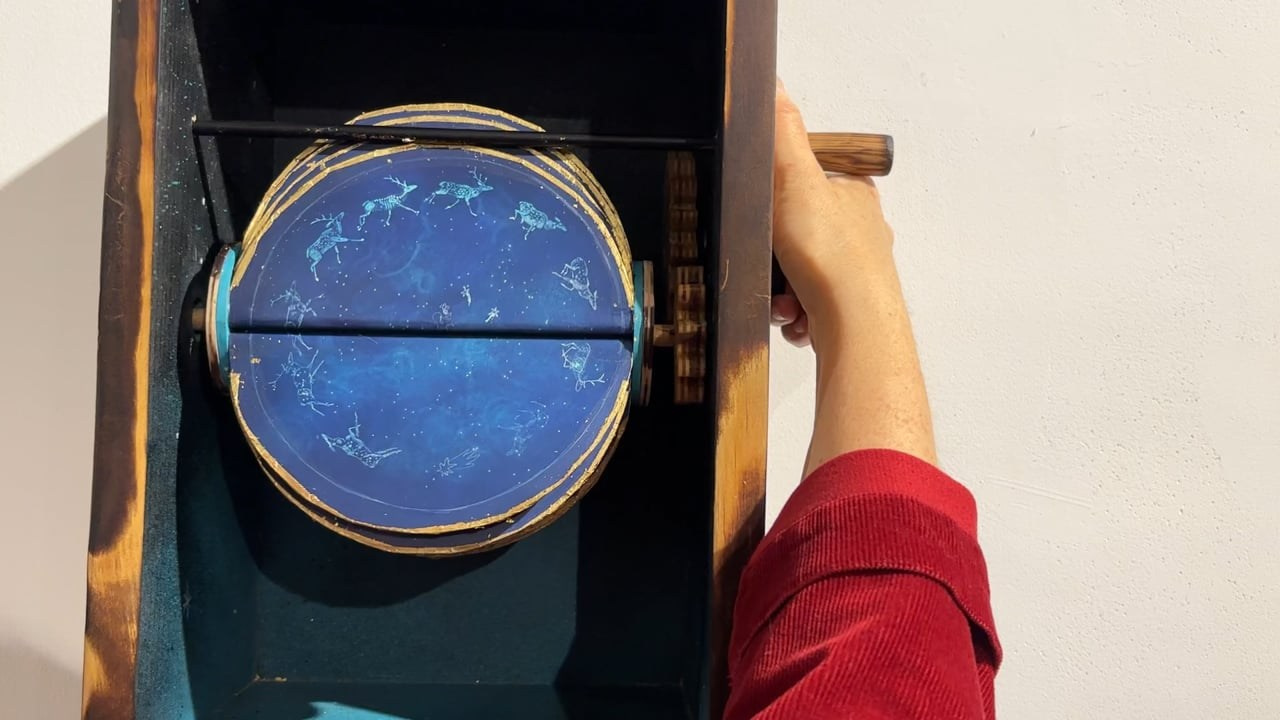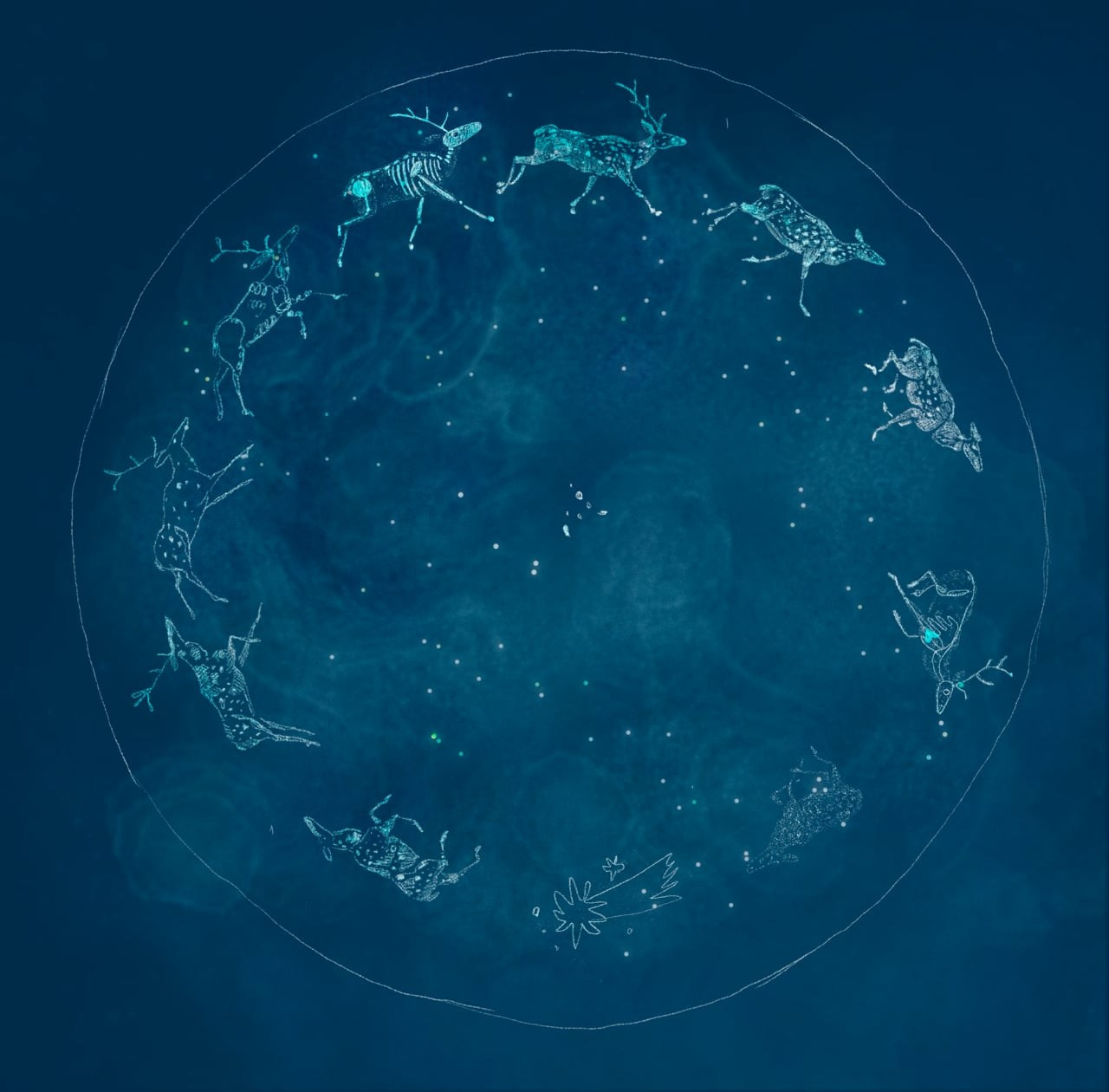Metabolism of Time. Together, We Eat the Earth.
A looping animation, “brought to life” by turning a handle, reminiscent of a street organ. The protagonists of the animation are the life cycles of a human, an animal, and a plant, whose interdependence forms the core idea of the project. The hand-crank mechanism serves as a metaphor: for the cycles of nature to continue, effort must be applied. Without it, the animation stops, and the connections break.
The characters are: a Reindeer Herder following his herd, the Reindeer dependent on lichen, and the Moss that can either regenerate or degrade — all participants in the process, all reliant on one another.
Ekaterina’s animation reveals the interconnectedness of every process, of all beings, both living and non-living. Through her project, the artist seeks to rethink the binary opposition of “human vs. nature” and move toward a more flexible, post-anthropocentric perspective. At the center of the work is not the human as observer and master of nature, but the animal as an equal agent within the web of life.
“I am interested in the inseparability of life — the idea that the human being is not the center of the ecosystem, but a part of it, and that our survival depends on the same processes as those of the Reindeer Herder, the Reindeer, or the Moss. In this project, I want to show the fragility of cycles — climate change, species extinction; the loss of rhythm — how urbanization pulls us away from natural time; and responsibility — if we ‘forget’ the past, it returns to us in the form of crisis.
My inspiration came from the very concept of ‘EcoArt’ as a space where it is possible to speak not only about ecological anxiety, but also about the entanglement of bodies, agents, landscapes, and histories.
The exhibition invites us to rethink anthropocentrism — something that resonates deeply with me. I work within a logic that can be called posthumanist, where the human body is not opposed to the environment, but understood as its continuation.
I hope that the viewer will be able to feel not as a separate entity, but as part of a shared cycle: of breathing, nourishment, movement, and dissolution.”
This work emerged from field observations of the lives of Reindeer Herders and their herds, from tracing the delicate interdependence between Reindeer and Moss, and from attuning to the seasonal rhythms of the land. It carries within it the echoes of biologists and anthropologists (Foraging Ecology of Reindeer; Indigenous Knowledge and Climate Change in the Arctic), the visions of ecological philosophers — Timothy Morton, Donna Haraway, Anna Tsing, Bruno Latour — and the revelations of mycorrhizal networks explored by Suzanne Simard.
Equally, it is shaped by the cultural practices of the Indigenous peoples of the North, by the metaphors that unfold in popular science writing (The Hidden Life of Trees by Peter Wohlleben), and by cinematic imagery (Gunda, 2020). Together, these influences invite a reimagining of the thresholds between human, animal, and plant — seeing them not as separate domains, but as equal participants woven into the shared cycle of life.

EcoArt. Art and (Non)human Agency
Museum of nonconformist art
Russia, Saint-Petersburg
2025

